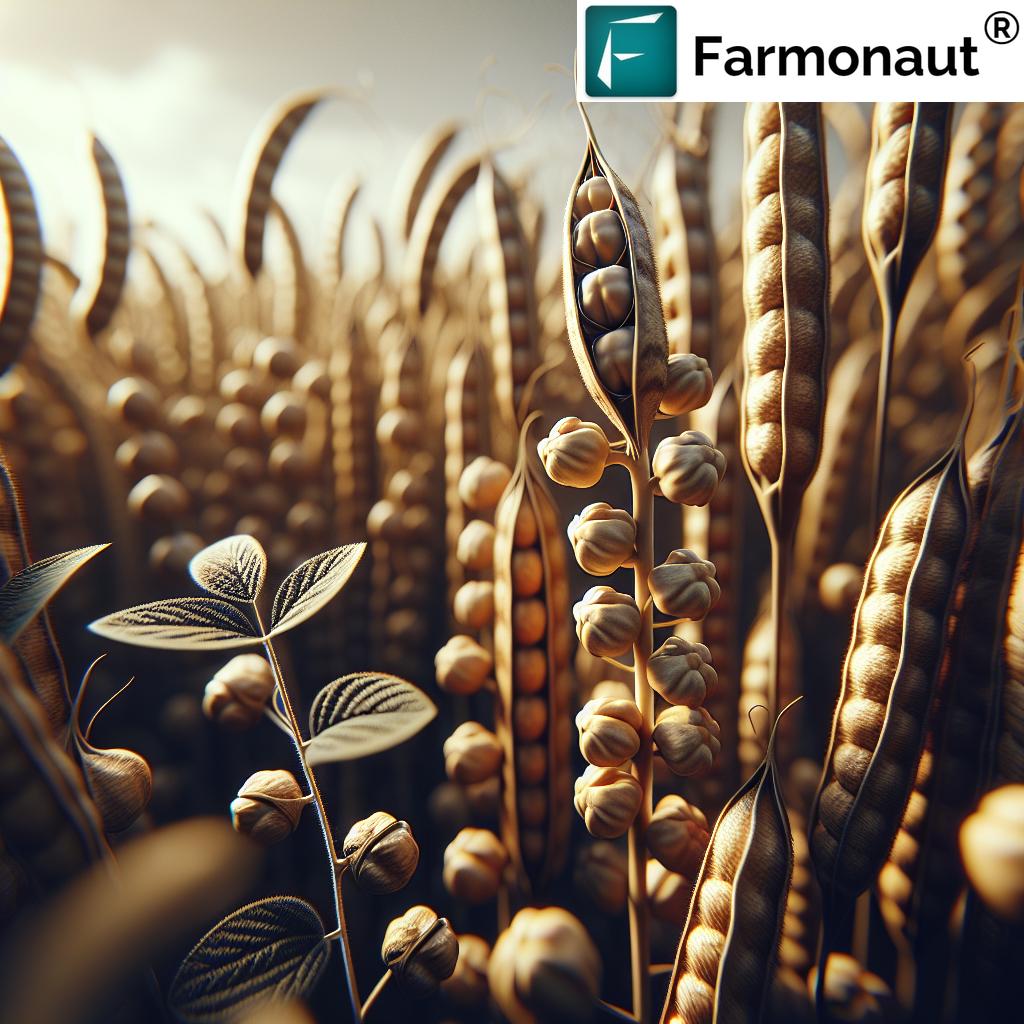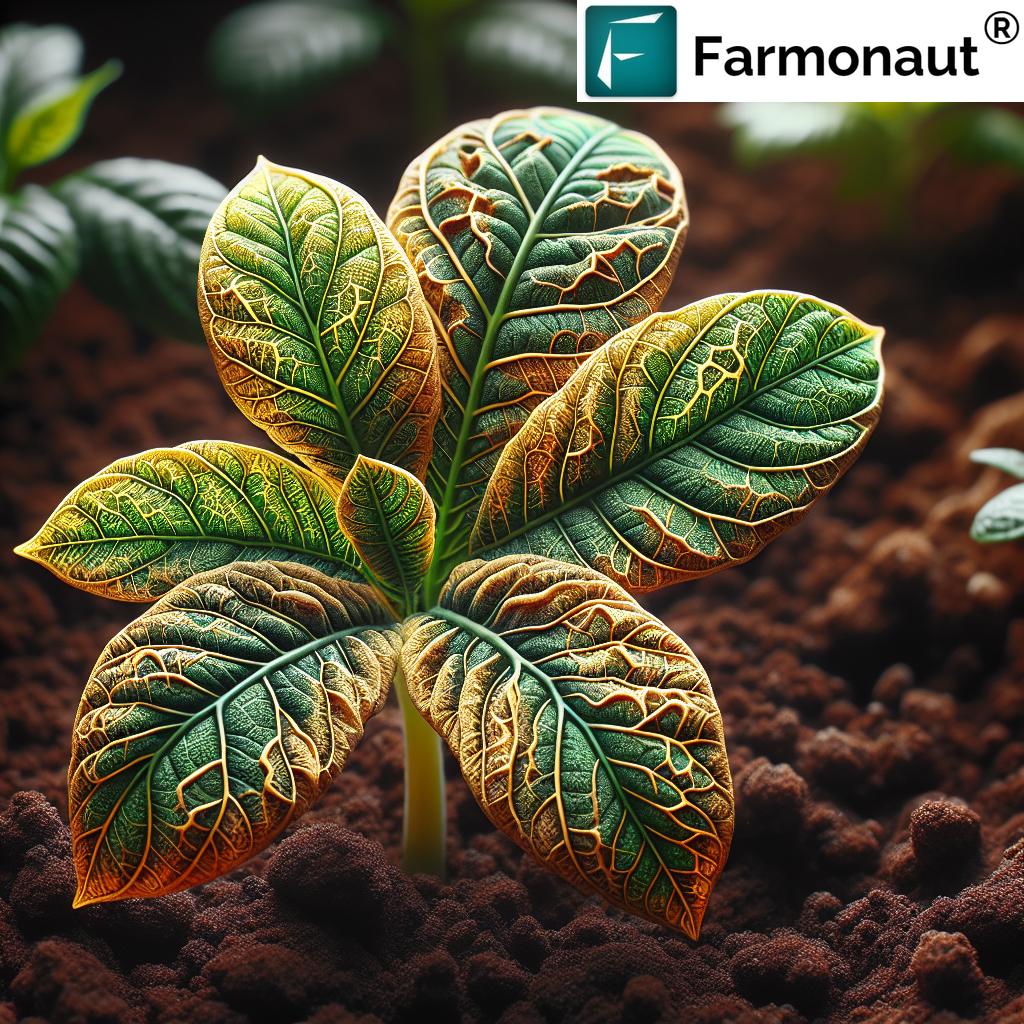Tips for Harvesting Chickpeas Successfully: Top 10 Steps
“Chickpeas reach optimal harvest moisture at 18-20%, ensuring maximum yield and minimal seed damage.”
Introduction: Why Chickpea Harvesting Matters
Chickpeas (Cicer arietinum), also known as garbanzo beans, hold a vital place among global legume crops. Their remarkable nutritional benefits, featuring high protein, fiber, and numerous vitamins, make them indispensable across various cuisines and food systems. As chickpeas are cultivated worldwide, maximizing chickpea yields and preserving their seed quality during harvesting is essential.
Achieving a successful chickpea harvest is more than just cutting plants at maturity—every step, from optimal harvest timing to post-harvest storage conditions, influences final crop value, seed viability, and farmer profits. This in-depth guide compiles the latest and most actionable chickpea harvesting tips, emphasizing practical methods, management strategies, and technologies, including advanced solutions like those provided by Farmonaut.
Step-by-Step Chickpea Harvesting Guide Table
| Step Number | Task Description | Estimated Timeframe | Recommended Tools | Key Tips /Yield Improvement (%) |
|---|---|---|---|---|
| 1 | Check crop maturity, assessing pod color and dryness | 100-120 days after planting | Field scouting, moisture meter | Harvest when 90-95% pods are brown to optimize yield (+12%) |
| 2 | Choose between direct harvesting and swathing | At full maturity or slightly before full dry-down | Combine harvester, swather, windrow equipment | Adapt method to uniformity and weed issues (+5%) |
| 3 | Apply desiccants for uniform dry-down if needed | 3-7 days before harvest | Sprayer, desiccant chemicals (per guidance) | Avoid certain desiccants if saving seed; improves uniformity (+4%) |
| 4 | Monitor seed color and moisture content | Regular checks during maturity | Moisture tester, visual checks | Ensure seed color is yellowish-cream; avoid under/overripe harvests (+7%) |
| 5 | Adjust combine settings, minimize seed damage | During harvest | Combine harvester, screen/cylinder calibrator | Fine-tune to crop; reduces damage, boosts seed quality (+8%) |
| 6 | Post-harvest drying to 10-12% moisture | Immediately post-harvest (several hours to days) | Aeration/drying bins, drying fans | Layer seeds thinly; maintain airflow (+9%) |
| 7 | Store in ideal conditions: cool, dry, pest-proof | After adequate drying (throughout storage period) | Airtight bins, sealed storage, pest detection tools | Regularly inspect; prevents storage losses (+10-30%) |
| 8 | Monitor and manage pests/diseases | Throughout chickpea crop cycle/post-harvest | Traps, approved pesticides (only as needed) | Early response minimizes losses (+6%) |
| 9 | Watch weather, plan to avoid pod shattering | Leading up to and during harvest | Local weather apps, crop health monitoring | Harvest before hot/dry wind to reduce shattering (+7%) |
| 10 | Maintain records for improvement | Seasonal; ongoing | Farm logbooks, digital management apps | Analyze data to refine practices (long-term yield benefits) |
1. Recognizing Optimal Chickpea Harvest Timing
Optimal chickpea harvest timing is the cornerstone of a high-quality, profitable crop. Chickpeas are best harvested when the majority of pods—around 90-95%—have turned brown and are fully dry. This typically happens 100-120 days after planting, though this varies by region, weather, and the chickpea variety grown.
- Visual Cues: Look for pods that have changed from green to tan or brown. Pods will make a rattling sound when shaken if seeds are dry inside.
- Seed Moisture Content: Use a moisture meter; chickpea seeds are ideally at 18-20% moisture at harvest—allowing harvesting without excessive seed damage or shattering.
- Why Proper Timing Matters: Harvesting too soon results in immature seeds lacking in nutritional quality, while late harvests increase risk of pod shattering and yield loss.
Tip: Keep records of maturity indicators over several seasons. This data, alongside our satellite-based monitoring solutions at Farmonaut, helps in accurately predicting harvest windows and optimizing scheduling for maximum yields.
“Proper storage can reduce chickpea post-harvest losses by up to 30%, preserving seed quality and profits.”
2. Harvest Methods: Direct Harvesting vs. Swathing for Chickpeas
Deciding between direct harvesting and swathing depends on the uniformity of chickpea crop maturity, weed pressure, and local conditions. Both methods aim to maintain seed quality and high yields.
- Direct Harvesting: If the crop matures uniformly and weeds aren’t significant, harvest directly using a combine harvester. This is efficient, reduces labor, and minimizes physical seed damage.
- Swathing: When maturing is uneven or weed infestation is high, swathing is preferred. It involves cutting the plants and arranging them in windrows for drying before combining. Time swathing for when plants are yellowing but pods are firm—preferably in the morning when there’s slight dew, which reduces pod shattering.
- Yield Tip: Swathing can improve quality by reducing seed shattering losses and gives farmers flexibility to harvest during unexpected wet weather.
These chickpea harvesting tips become especially important in regions subject to unpredictable weather patterns and differing plant growth rates. Monitor weed growth carefully and plan your harvest strategy accordingly.
Learn more about precision field management in large-scale chickpea plantations using Farmonaut’s advanced Farm Management Solution. This app enables real-time satellite monitoring for uniformity, identifies patches of delayed maturity, and assists in planning harvest methods for enhanced yield.
3. Desiccation: Facilitating Even Dry-Down in Chickpea Crops
Desiccation refers to the use of chemicals known as desiccants to promote uniform and rapid drying of chickpea plants before harvesting. This method is particularly useful in areas where late-season growth causes uneven crop maturity, or where the risk of rain delays harvest.
- Desiccant Chemicals: Registered products, like paraquat or diquat, are often employed. However, avoid using glyphosate for crops intended for seed production, as it adversely affects seed germination.
- Application Timing: Apply desiccants when most pods (at least 80%) have matured but not yet shattered. Typically, 3-7 days before planned harvest.
- Reduce Shattering Risks: Desiccation reduces risk of rapid dry-down in only a portion of the field, minimizing pod shattering and uneven threshing.
- Note: Always follow local agricultural guidelines for approved desiccants and application procedures.
Farmonaut offers satellite data integration to plan desiccation. Our Farmonaut API and Developer Docs give agronomists and agri-tech businesses tools to forecast crop maturity, select optimal desiccation windows, and precisely manage harvest logistics.
4. Monitoring Seed Color and Moisture Content for Chickpea Harvest
Careful monitoring of seed color and moisture content allows for harvesting at the development stage that ensures optimal seed quality, reduces losses from shattering, and reduces risk of mold or insect damage.
- Seed Color: Harvest chickpeas once seeds show a yellowish-cream to tan hue. Green seeds or those with green flecks signal immaturity.
- Moisture Levels: The target is 18-20% for optimal mechanical harvesting. Too low (<13%) increases shattering; too high increases risks during storage.
- Sampling for Quality: Take pod samples from several parts of the field for a uniform assessment of maturity.
Proper monitoring not only improves seed quality but also supports higher market value and germination rates for seeds retained for replanting.
5. Harvesting Techniques: Reducing Seed Damage During Harvest
One of the most critical chickpea harvesting tips involves reducing seed damage during harvest. This is achieved mainly through proper calibration and operation of the combine harvester.
- Combine Settings: Adjust screen size, cylinder speed, concave clearance, and fan airflow to suit chickpea seed size and field conditions.
- Threshing: Set the combine to minimize cracking and splitting, especially when seeds are drier than optimal. Harvest early in the morning for slightly higher moisture content (less brittle seeds, less shattering).
- Cleaning: Eliminate excess plant debris (trash) to maintain seed quality for consumption or planting.
Farmonaut’s real-time crop health monitoring tools allow us to remotely check chickpea field status, optimizing timing for machinery and minimizing losses via automated field advisory alerts.
Explore our Fleet and Resource Management tools, which enable farmers and agribusinesses to better allocate machines and teams during critical harvest windows—saving time, cutting operational costs, and maintaining seed quality.
6. Post-Harvest Drying: Best Practices for Chickpea Yield
After harvesting, drying chickpeas after harvest down to 10-12% moisture prevents spoilage, reduces disease and pest risks, and preserves vital seed quality.
- Ambient Airflow: Use natural or forced ventilation in storage bins. Spread the harvested beans in thin layers for even drying.
- Temperature: Maintain storage below 25°C (77°F) where possible. High temperatures can reduce germination and increase spoilage.
- Moisture Checks: Regularly measure seed moisture to ensure you achieve and maintain the optimal range. Avoid over-drying, which can make chickpea seeds brittle and prone to damage during handling.
This simple yet critical post-harvest management step can boost overall marketable chickpea yields by preventing significant storage and handling losses.
Properly dried seeds can also be integrated into a blockchain-based product traceability system utilizing Farmonaut technology—enhancing transparency, market reputation, and supply chain value for corporate growers and exporters.
7. Storage Conditions: Preserving Seed Quality After Harvest
Chickpea storage conditions have a lasting impact on seed quality, food safety, and overall profit from your crop. Even the most skilled harvesting cannot compensate for poor storage practices.
- Environment: Store dried chickpeas in a cool, dry place. Use sealed, airtight containers or bins to block moisture and pests.
- Monitoring: Routinely check stored seeds for odd odors, signs of mold, or insect presence.
- Pest Prevention: If bulk storage is used, regularly turn beans to maintain airflow and discourage insect growth.
- Duration: For seeds retained for planting, keep humidity to <12% and temperature below 20°C. Rotate older stocks before newer ones.
Utilizing Farmonaut’s app enables digital storage records and reminders, eliminating manual logbooks and improving seed quality predictability from harvest to market.
Optimize post-harvest logistics and long-term seed conservation with our Carbon Footprinting and Sustainability Monitoring. This helps you improve eco-efficiency, comply with sustainability protocols, and enhance value for buyers in major markets.
8. Pest and Disease Management in Chickpea Crops
While chickpeas enjoy relative resistance to many pests owing to natural plant chemicals and glandular trichomes, certain insect and disease issues can affect yields both during growth and post-harvest.
- Common Pests: Seedcorn maggot, wireworms, bruchids, and stored grain beetles can infest fields or stored beans—especially in humid regions.
- Integrated Pest Management: Regular field scouting, crop rotation, and prompt removal of infested plants are essential. For significant problems, consult local agricultural advice and use approved biological or chemical controls responsibly, especially near harvest.
- Disease Monitoring: Watch for Ascochyta blight and Fusarium wilt in susceptible areas. Practice disease-free seed sourcing and sanitize equipment after each use.
Pest management in chickpea crops goes hand-in-hand with great storage and timely, clean harvesting, ensuring your seeds stay safe and high value.
Farmonaut’s AI-driven advisory systems and real-time satellite alerts make it easier to spot anomalies—such as pest outbreaks or disease stress—before they cause significant yield declines.
Link your chickpea harvest information securely using our Blockchain-Based Product Traceability for food safety, compliance, and peace of mind in supply chains.
9. Weather Considerations and Preventing Pod Shattering in Chickpeas
Local weather conditions directly influence chickpea harvesting timing, drying, seed quality, and the risk of shattering. Hot, dry spells near harvest, especially in August-September in chickpea-growing regions such as North Dakota, can accelerate drying and increase the danger of pods splitting open and seeds being lost before collection.
- Monitor Forecasts: Pay attention to weather updates daily during the month leading up to expected maturity.
- Act Early: Plan your harvest for early morning or after brief rains, when pods are less brittle.
- Avoid Delays: Prolonged field drying or unplanned rain can lower yields, reduce marketable quality, and encourage diseases.
Our Farmonaut real-time weather analytics and satellite-based crop monitoring empower users to quickly adjust harvest schedules, minimizing the economic impact of sudden weather shifts.
Learn more about the Crop Loan and Insurance Verification with Satellite Technology—helping you document weather risks, access finance, and protect your chickpea harvest revenue.
10. Record-Keeping and Continuous Improvement in Chickpea Harvest
A major, often-overlooked practice for consistent improvement in chickpea harvesting results is disciplined record-keeping. Tracking every field operation builds up valuable experience for refining future practices.
- Track Critical Data: Note planting dates, harvest timings, weather conditions, crop yields, input usage, and observations of issues (e.g., pest, weed, disease outbreaks).
- Analyze Results: Review which harvest methods and timings produced the highest seed quality and yield, then adjust next year’s schedule accordingly.
- Use Digital Tools: Our Farmonaut app includes field logs, reminders, and historical weather overlays, making digital farm record-keeping effortless and accessible for everyone—from smallholders to cooperatives.
Regular evaluation via up-to-date records leads to steady improvement, higher yields, and smarter risk management.
Modern Farmonaut Solutions for Chickpea Harvesting and Management
At Farmonaut, we believe that precision agriculture and data-driven insights are essential in the modern agricultural landscape—including chickpea harvesting. By integrating satellite-based monitoring, AI-powered advisories, and blockchain traceability, we help farmers worldwide optimize their chickpea crop management from sowing to storage.
- Real-Time Crop Health Monitoring: High-resolution NDVI and multispectral imaging support assessment of field uniformity, identifying early issues even before visible symptoms emerge. Perfect for optimizing harvest timing and minimizing losses.
- AI-Based Advisory (Jeevn): Our AI system delivers tailored crop, irrigation, input, and pest management advice directly to users’ smartphones or desktops.
- Traceability & Blockchain: Guarantee the provenance and quality of your harvested chickpea beans, building trust with buyers and achieving market premium.
- Sustainability and Carbon Footprint: Monitor and reduce environmental impacts, documenting compliance for sustainable agriculture certifications.
- Scalable Solutions: From large-scale farm management to individual farmer tools, our platform serves everyone, everywhere.
- API Access for Developers & Agrotechs: Integrate Farmonaut data into third-party apps or legacy advisory systems, driving faster progress in agri innovation. (API Portal, Docs)
Conclusion: Best Practices for Successful Chickpea Yield
Mastering chickpea harvesting is a blend of science, experience, and the right technology. By applying these top 10 best practices for chickpea yield—from optimal harvest timing and uniform drying to smart pest management and disciplined storage—farmers and producers worldwide can consistently maintain seed quality and maximize profitability, whether for food staples or seed. For those integrating solutions like Farmonaut, actionable data and precision management take yields and quality even further.
Remember, each stage—from monitoring chickpea crop maturity indicators and choosing the right harvest methods to investing in proper drying and storage—adds up to healthier beans, less damage, and bigger returns. Adopt these steps, customize to your region, and leverage innovative farm management systems to secure your most successful chickpea harvest yet.
FAQ: Chickpea Harvesting Tips & Best Practices
Q1. What is the best time to harvest chickpeas?
The optimal chickpea harvest timing is when 90-95% of pods are brown and fully dry, with seeds reaching 18-20% moisture content. This generally occurs 100-120 days after sowing, though exact timing may vary by region, weather, and variety.
Q2. How do I reduce chickpea seed damage during harvest?
Adjust combine harvester settings such as screen size, cylinder speed, and airflow to minimize seed splitting and damage. Harvest in the morning when moisture is slightly higher, and don’t over-dry seeds before mechanical harvest.
Q3. What are the ideal storage conditions for chickpeas?
Store dried chickpeas at 10-12% moisture in a cool, dry, airtight container to prevent insect infestations and mold. Monitor regularly for any signs of spoilage or pest activity. Proper chickpea storage conditions can reduce losses by up to 30%.
Q4. How can I prevent pod shattering in chickpeas?
Monitor pod color and weather forecasts closely; harvest before prolonged hot, dry periods. Swathing or early morning harvesting can reduce brittleness and the risk of shattering.
Q5. Can Farmonaut help maximize my chickpea crops?
Yes, our satellite-based crop monitoring, AI advisory, and traceability tools assist with optimal scheduling, pest and disease detection, and sustainable farm management for chickpea yields. Available via web, mobile app, and API.

















